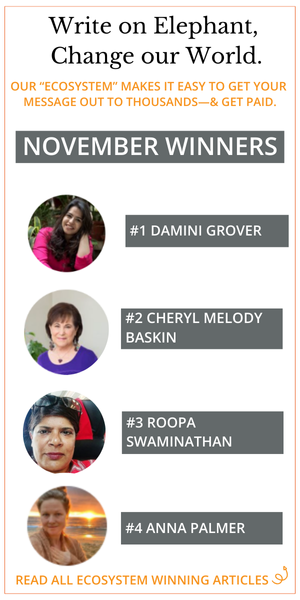How do we tap into mindfulness in our everyday lives?
The modern life burdens us with the shackles of stability and predictability. We’ve been heading in this direction since the Industrial Revolution gave us the mass-produced clock. Or maybe it was the omnipresent clock that gave us the work efficiency which enabled the Revolution.
Regardless, each of our weekdays starts at the same hour. The temperature and brightness in our office remain constant during the day. Our tasks are probably repetitive too. Even in our spare time, the radio drones the same playlist over and over; the music repertoire begs for a makeover. Our environment is stable and controlled, but our brain desires some distraction. Longing for it becomes an all too familiar feeling.
So we plug ourselves into the Internet. We keep one eye on the notification icon. We’re like animals, always alert, surveying an ever-changing landscape.
Spam. Commercial. Funny Picture. Refresh. Refresh. Refresh.
But it only gets more stale. There are unbearable moments where nothing happens. We hope for the weekend. A party may bring something juicy for the senses. But, then again, we don’t feel like going to the same places over and over.
Life has become smoother, more convenient and connected. And we like it. But, too often, nothing exciting seems to be happening.
Whether we resort to the Internet or television, our satisfaction is only momentary, yet the hunger we are trying to feed is perennial.
Yoga and Buddhist traditions propose various means to break this vicious cycle. The concept I am sharing with you today is called mindfulness (samyama).
The best part? There are no new techniques or special gymnastics you need to learn. You simply want to “unlearn” the habit of being mindless. The bottom line is changing the way we experience our surroundings.
We were all born with this skill, and it is best visible in kids, who cultivate it instinctively.
Recall how they interact with nature. Butterfly! They follow it single-mindedly into a meadow. Flower! They pick petals from it and closely examine the flower’s scent, color, structure, and (why not?) taste. Silence. Time stops while they inspect the intersection of a halved orange with rapt gazes. They probe it with fingers, tongue or cheek. They marvel wholeheartedly and their jaws drop in awe.
Simple things. We take them for granted.
Mindfulness means that our entire attention is on our actions, even if we perform these actions mechanically. This attitude knows no purpose, because purpose takes us away from the present moment. The focus is here and now. Multiple senses are involved so that objects can be “felt” rather than thought of.
Even the act of lying down can be done in a mindful way, providing our mind is occupied with our intimate bodily sensations and not with esoteric thoughts. But, as an adult, it may be easier to first practice mindfulness in activities which feel new to us.
Try brushing your teeth with your non-dominant hand and observe how it feels. This will help bring your attention to the action of brushing rather than thinking about breakfast, commute or office work.
Alter your daily routines to give them a fresh twist. Then do them mindfully. Stick with this new way of seeing things. You will discover that this quenches your thirst for distraction.
And, every once in a while, throw yourself into an out-of-town adventure. Simply take a train instead of a plane next time you visit your family.
Airports are mind-numbing. Train stations are mind-blowing.
Open your senses and absorb the many manifestations of life. People yawning, waking from sleep. Babies crying. In coach it may get rough on your senses. Do not fantasize about the comfort of flying or about your journey’s destination. Instead, experience the smells around you—greasy snacks, sugary beverages. If you are on a night train, feel the firmness of the bed.
If the sensations evoke some memories, simply be aware of them as they arise in that moment. Refrain from getting carried away by them. Remain in the here and now.
How do you know if you’re in need of mindful living? Ask yourself these questions: Are you always multitasking, even if there is time to do things one by one? Hankering for a snack, drink or a cigarette every 15 minutes? Tuning in to breaking news or showbiz gossip feeds 24/7? Over-stimulated, yet constantly craving?
If you are still not sure, observe someone whose behavior has the symptoms of a mindless attitude. Studying others can be easier than self-study (svadhyaya) but is equally useful. See if their behavior applies to you. If yes, pick mindfulness as your new hobby. Discreet, portable and free—but very powerful.
Two Simple Exercises to Awaken Mindful Living:
Meditative eating and walking are exercises that will give you the experience of mindfulness, which you can apply to your daily life. Take the time to practice them daily for a week, and see how your life becomes richer and more satisfying.
Eating an orange (15-30 minutes).
Pick a juicy orange and wash it.
Smell it. Squeeze it slightly. Study the pores on its skin.
Halve it with a knife, across the wedges. Count the segments.
Explore the texture with your fingers, tongue, cheek, etc.
Start peeling it from the edge. Observe the breaking of the white fibers from the skin. Then do it again close to your ear. How does it sound?
Take the removed skin and bend it, so that the orange essence is ejected from the pores on the outside. Do it again closer to your face, with your eyes closed. You should feel the essence being sprayed on your cheek. Listen to the sound.
Continue disassembling the fruit. Remove the membrane of a single wedge. Play with the smaller segments inside the wedge.
Slowly, bring a piece closer to your mouth. Smell it. Notice if it has a different temperature than your lips. Then touch it to your lips. Start chewing the piece and observe how its taste changes over time time. Observe the aftertaste before you reach for another piece.
Be open to new experiences with each piece of the fruit.
You can repeat with another orange, this time skinning the entire fruit without cutting it into halves. On another day you can choose a different fruit.
Mindful walking (10-30 minutes).
Find a space where you can practice walking slowly without being disturbed or observed by others.
Chose the path on which you will be walking. You can walk back and forth across a room, or in a circle.
Stand with your spine erect, but do not tense your shoulders. Eyes should be gazing directly ahead.
Start walking on the chosen path at a normal pace, for about two minutes. Do not stop. Pay attention only to how it feels to walk. Be with your bodily sensations. You can focus on the movement in individual body parts: your neck, shoulders and arms, pelvis, tights, knees, calves, ankles and feet.
Halve the pace at which you were walking and continue for the next three minutes. Observe how the bodily sensations change or become more perceivable when you walk more slowly.
Repeat the previous step two more times. Each time, walk at a halved pace for three minutes. Do not drop your gaze. Keep your posture erect. Direct your focus on how the body feels. You may now be able to distinguish minute sensations, such as the very moment when your foot rises from the ground, or when your body weight shifts from one side to another.
Stop walking and remain with the physical sensations in your body for a few moments.
Szymon Jarosławski’s childhood interest in nature led him to study molecular biology, pursue a PhD in biophysics and conduct advanced research on health systems and innovation. He has practiced meditation and visualization since he was 16, which helped him regain inner peace and led him to study Western and Eastern psychology in addition to yoga and other mind-body disciplines. He currently lives in India and devotes his time to instruction and mastering these disciplines, as well as writing.
Like elephant journal on Facebook.
Assistant Ed: Dejah Beauchamp/Ed: Kate Bartolotta


 Share on bsky
Share on bsky




Read 0 comments and reply